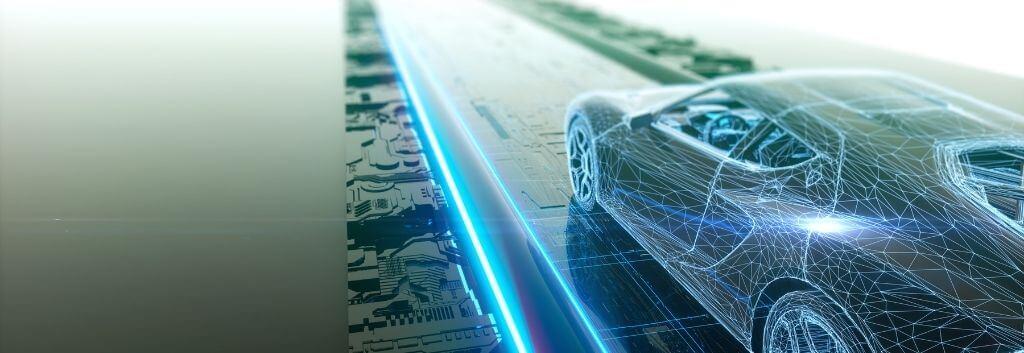
最近では、テレビCMなどでもよく耳にすることが多くなってきた「自動運転」だが、2020年代は、自動運転技術が大幅に進化し社会に普及していく自動運転時代になることが予想されており、条件付きで自動運転を可能とする自動運転レベル3や、無人運転を可能にする自動運転レベル4の社会実装が始まっている。
幕を開けたばかりの自動運転時代に乗り遅れないよう、自動運転の仕組みから要素となる技術、開発動向など、自動運転に関わる基礎知識を総括的に解説していこう。
自動運転のレベル
国内において、自動運転は運転タスクの主体や走行領域に応じて、便宜上レベル0~5の6段階にレベル分けされている。レベル分けの基準は、米国の非営利団体「SAE(米国自動車技術会/Society of Automotive Engineers)」が策定したものが世界で最も普及しており、日本もこれを採用している。
|
レベル |
名称 |
運転主体 |
走行領域 |
|
0 |
運転自動化なし |
人 |
適用外 |
|
1 |
運転支援 |
人 |
限定的 |
|
2 |
部分運転自動化 |
人 |
限定的 |
|
3 |
条件付運転自動化 |
システム |
限定的 |
|
4 |
高度運転自動化 |
システム |
限定的 |
|
5 |
完全運転自動化 |
システム |
限定なし |
自動運転のレベル分け(参考:JSAE「運転自動化レベルの概要」)
レベル1~2はADAS(先進運転支援システム)に相当する
レベル0は「運転自動化なし」で、ドライバーが全ての動的運転タスクを実行する。旧来の自動車がこのレベルにあたる。
レベル1は「運転支援」で、システムが動的運転タスクの縦方向または横方向のいずれか一方の車両運動制御のサブタスクを特定の限定領域において持続的に実行する。衝突被害軽減ブレーキやアダプテッドクルーズコントロールといった縦方向の運転支援システム、またはレーンキープアシストなどの横方向の運転支援システムのどちらか一方を搭載しているケースだ。
縦方向と横方向の両方を備えるとレベル2になる。レベル2は「部分運転自動化」で、システムが動的運転タスクの縦方向と横方向の両方の車両運動制御のサブタスクを特定の限定領域において持続的に実行する。
レベル2が高度化すると、一定条件下でハンドルから手を離すことができる「ハンズオフ」運転が可能となる。あくまで運転支援システムであるため、ドライバーは車両周囲への監視を怠ってはならないが、こうした技術がより進化を遂げ、ドライバーの監視義務を要しない技術レベルに達すれば晴れて「自動運転」となる。
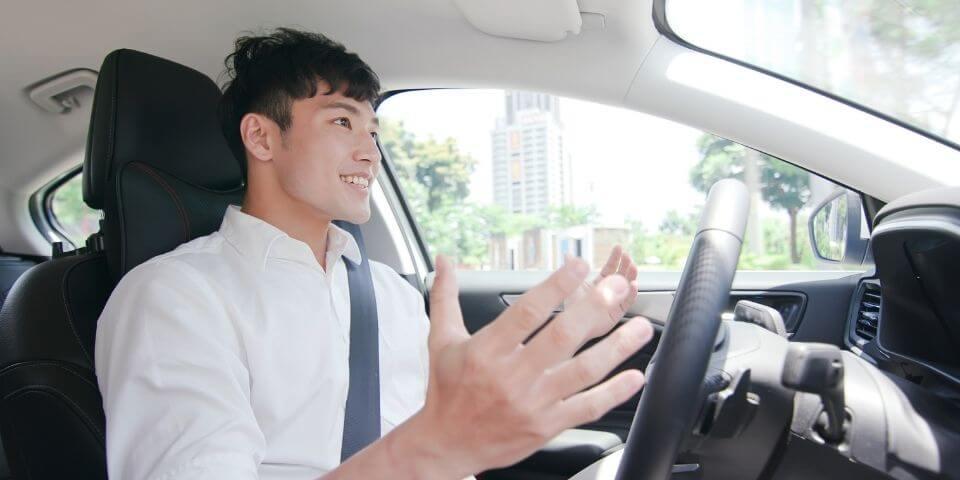
自動運転の初歩となるレベル3
レベル3は「条件付き運転自動化」で、システムが全ての動的運転タスクを限定領域において持続的に実行する。システムの作動中、ドライバーは車両周囲の監視義務を免れる「アイズオフ」運転が可能となり、車内で一定程度くつろぐことができるが、システムの作動継続が困難となった際、ドライバーは迅速に運転タスクを担わなければならないため、睡眠や飲酒などは厳禁となる。
国内では、道路交通法及び道路運送車両法の改正により2020年4月に解禁された。また、同年6月に国際基準も成立し、今後、2021年にかけて解禁の波が世界に広がっていくことが予想される。
国際基準では現状、自動運転システムの作動は高速道路などの自動車専用道路において時速60キロ以下の走行時に限られているが、実用化後の運用状況や技術の進展を踏まえ、徐々に作動条件(ODD/運行設計領域)も拡大していくものと思われる。

レベル4以上はドライバー不在の運転が可能に
レベル4は「高度運転自動化」で、システムが全ての動的運転タスク及び作動継続が困難な場合への応答を限定領域において持続的に実行する。自動運転システムごとに走行可能な条件となるODDが設定され、ドライバー不在の自動運転が実現する。レベル4以降はドライバーが運転動作を考える必要がなくなるため「ブレインオフ」と呼ばれることが多い。
レベル4による自動運転移動サービスの実用実証は国内外各地で積極的に行われている。多くは万が一に備えセーフティドライバー同乗のもと運行しているが、米アリゾナ州では、グーグル系Waymo(ウェイモ)が2019年からセーフティドライバーなしの事実上のレベル4サービスの提供を開始している。
中国でも実用実証が盛んで、2021年中にはセーフティドライバーなしの運行がスタートする可能性が高そうだ。日本では、遠隔監視のみの無人サービスは2023~2025年ごろの実現を目標に掲げている。
レベル5は「完全運転自動化」で、走行エリアや速度、天候など、あらゆる条件下でシステムが自動で走行する技術となる。2030年代の実現を目指す動きが多いが、ハードルが非常に高いため実現時期は現状不透明なものとなっている。
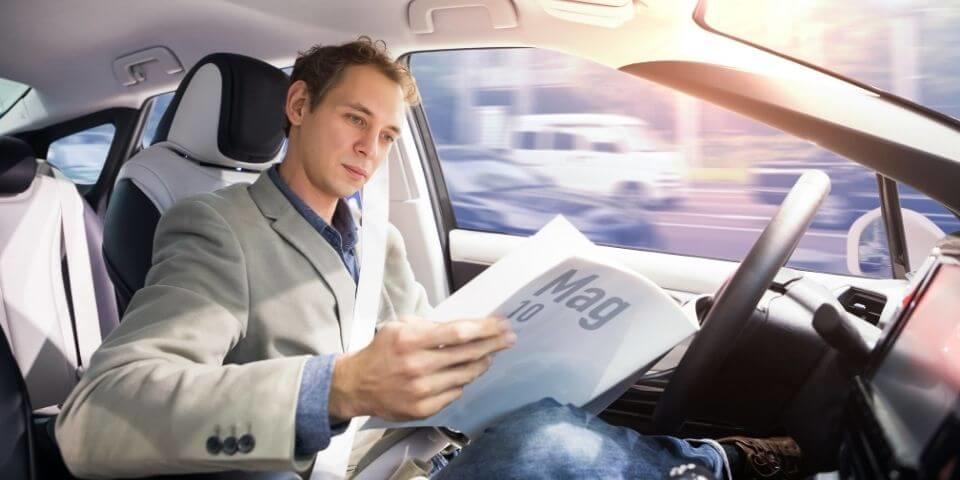
自動運転の仕組み
自動運転は、ドライバーによる認知や予測、判断、操作(制御)に関する各能力をシステムが代替することで実現する。
車両に搭載されたカメラやLiDAR(ライダー)、ミリ波レーダーといったセンサーが「目」の役割を担い、車両の周囲や前方を常時監視し、センサーが取得した画像データなどから他の車両や歩行者、道路上の白線、標識などを認識し、安全に走行するためAI(人工知能)が「脳」となってアクセルやブレーキ、ハンドルなどの制御を判断する仕組みだ。
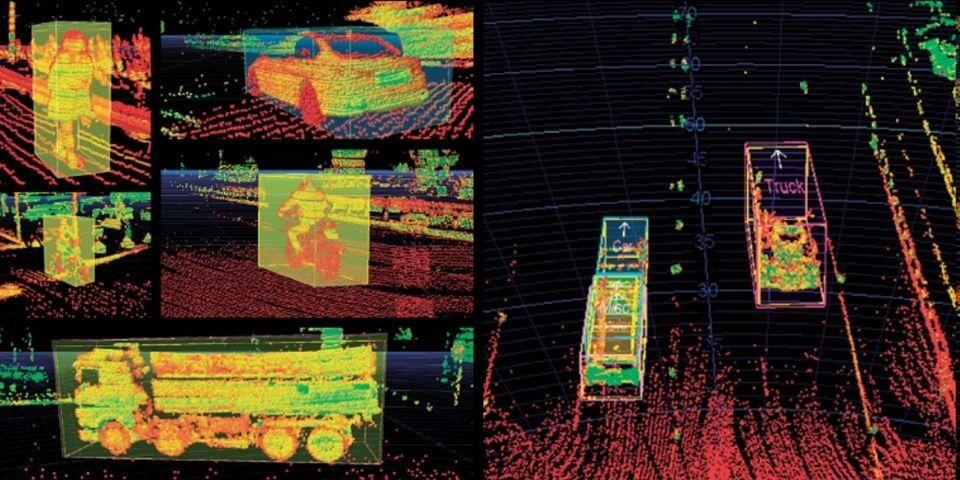
センサーとAIのみで自動運転の実現を目指す企業もあるが、多くはGPSなどの衛星測位システムや高精度3次元地図、路車間通信(V2I/Vehicle-to-Infrastructure)・車車間通信(V2V/Vehicle-to-Vehicle)といったV2X技術を活用し、安全性の向上を図っている。
高精度3次元地図は、道路上や周辺を精密に3Dマッピング化したもので、走行レーンや白線、標識をはじめ、自動運転車が必要とするさまざまな道路情報が付加されている。この高精度3次元地図に交差点の信号情報や混雑状況、事故情報などをリアルタイムで追加したものをダイナミックマップという。
自動運転車は、この高精度3次元地図をベースに、センサーが映し出した画像やGPS情報などを照合しながら自車位置を把握し、正確な走行を実現する。
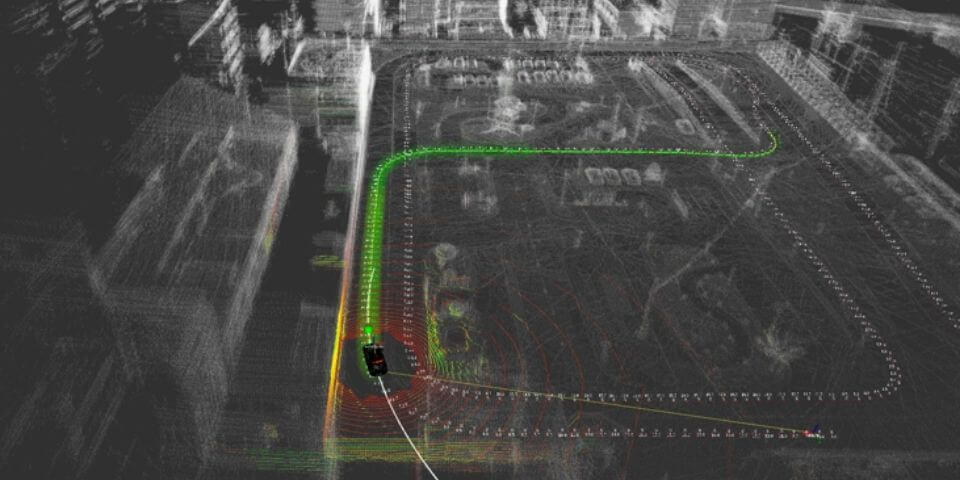
また、道路周辺のインフラや周囲を走行する車両、自動運転システムを管理するサーバーなどと常時通信を行い、道路交通に関するさまざまな情報を取得したり、センサーデータや車両の走行状況を示すプローブデータなどをサーバーとやり取りしたりすることで、安全性や自動運転システムの能力向上を図る。
このほかにも、道路に敷設した磁気マーカーを読み取ることで自車位置を把握する自動運転システムなどもある。路線バスのようにあらかじめ走行ルートが決まっている自動運転サービスでの実用化に期待が寄せられている技術だ。
自動運転の要素技術
さまざまな技術が結集する自動運転車は、最新テクノロジーの宝庫と言える。自動運転車を構成する技術には、AIをはじめ認識技術や位置特定技術、通信技術などいくつかの要素技術が存在し、それぞれ最先端の研究開発の成果が実装されている。
AI技術

自動運転における中枢的役割を担うのがAI技術だ。「脳」として車両に制御命令を下す役割をはじめ、各要素技術に広く活用されている。
近年、マシンラーニング(機械学習)やディープラーニング(深層学習)といったAIの学習方法が大きく進展したことが、自動運転の実現に直結していると言っても過言ではない。
認識技術

カメラやLiDARなどのセンサー本体の開発をはじめ、各センサーのデータに映し出されたものが何かを特定する技術開発は、自動運転分野において最も注目を集める開発領域だ。
センサーそのものの解像度や検知範囲の向上などをはじめ、データ内に映し出されたものが何か、その物体までの距離やサイズはどのくらいか、どういった変化を伴うのか――といった認識結果をもとにAIが車両をどのように制御するか判断するため、非常に重要な技術となっている。
位置特定技術

地球上(道路上)において自車両が現在どこに位置しているかを特定する技術だ。カーナビゲーションなどではGPSが活用されているが、誤差の範囲が広くトンネルなど電波の届かない場所では活用できないため、自動運転車では複数の手法を併用するのがスタンダードとなっている。
衛星測位システムでは、GPSのほか誤差数センチレベルの測位を実現するQZSS(準天頂衛星システム)の本格導入に期待が寄せられている。この衛星測位システムをベースに、高精度3次元地図上のデータと車載センサーに映し出されたデータを照合して自車位置を確認する手法や、位置の特定と地図作成を同時に行うことが可能なSLAM技術などを組み合わせ、より正確な自車位置を特定する。
通信技術

現在、自家用車において通信機能を備えたコネクテッドカーの普及が進んでいるが、自動運転車は原則としてコネクテッド化され、常時通信しながら走行する。
センサーとAI主体の認識技術に加え、道路インフラや周囲の車両、サーバーなどからリアルタイムの道路交通情報を取得することで、走行安全性を高めるのだ。道路インフラとの通信を路車間通信(V2I)、他車両との通信を車車間通信(V2V)と呼び、交差点の信号情報や歩行者情報、走行レーンに関する情報などを送受信する。
また、センサーデータなどをサーバーに送信することで、自動運転開発企業はいっそうのシステム向上を図ることが可能になる。また、収集した道路交通情報や車両情報などをビッグデータ化することで、解析結果を改めて各車両に配信したり、新たな交通サービスに結び付けたりすることも可能になる。
膨大なデータを高速通信する必要があるため、移動通信システム「5G」をはじめさまざまな通信手法を組み合わせた通信技術が必要とされている。
サイバーセキュリティ技術

常時通信を行う自動運転車には、高度なサイバーセキュリティ技術も必要となる。自動運転車が万が一ハッキングを受けた場合、その被害は人命をはじめ道路交通社会全般に及ぶためだ。
業界を通じてセキュリティ情報を共有するほか、公道を走行する自動運転車が備えるべきセキュリティ技術の標準化なども求められる。
ヒューマンマシンインタフェース技術

機械と人が情報や意思を伝達するヒューマンマシンインタフェース(HMI)技術も必須となる。従直接自動車を制御していたドライバーが不在となるため、乗員の意向をいかに効率的かつ正確にコンピュータに伝えるか、逆に自動運転システムの作動具合などをいかに乗員に伝えるかといった人と機械の意思疎通を円滑にする技術も必要となるのだ。
合わせて、乗員を監視するドライバーモニタリングシステム(DMS)も進化を遂げる可能性が高い。車内カメラが乗員の挙動を観察し、車内における安全性の確保をはじめ、乗員の姿勢や行動、表情などから要望をくみ取る機能などが実装される可能性も高い。
データ処理技術

膨大な量のデータを取り扱う自動運転車においては、データ処理技術も必須となる。自動運転車に搭載されるGPUやストレージなどの高機能化はもちろんだが、自動運転車単体で全てのデータを処理するには非効率となり、サーバー・クラウドの有効活用が求められるが、クラウドなどを介することでデータ処理に遅延が生じることも想定される。
このため、エッジとなる自動運転車とクラウド、その中間に位置するエッジクラウドなどによる分散コンピューティングの導入を推進する動きもみられる。
自動運転のメリットと活用
無人走行を可能とするレベル4の開発は、バスやタクシーといった移動サービスを主体に開発が進められている。車両そのもののイニシャルコストは当面高額となるが、ドライバー不在による人件費の低下など運用コストは低下し、将来的に運賃の引き下げにつながる可能性が高い。
運賃の低下が新たな乗客を呼び込むとともに、さまざまな移動サービスを結び付けるMaaS(Mobility as a Service/移動のサービス化)の浸透によって利便性も増し、自家用車から移動サービスに乗り換える層も増加することが見込まれている。
自家用車の減少は交通渋滞の緩和や環境負荷の低減に直結し、道路交通環境全体の向上につながっていく。また、空いた車線を自動運転車専用道路や超小型モビリティ専用道路にしたり歩道を拡幅したりするなど、道路の有効活用にも期待が持たれている。

移動サービス以外では、配送サービスへの導入にも注目が集まっている。インターネット通販(EC)の利用増加などを背景に宅配需要が増す一方、物流業界におけるドライバー不足は深刻化しているが、自動運転車や小型の宅配ロボットが無人で宅配を担うことにより、こうした問題を解決することができる。
また、宅配ロボット同様に、建物内の警備や掃除、デリバリーといった一定のタスクを担うロボットにも自動運転技術は活用されており、オフィスビルやショッピングビル、ホテルなどで導入が始まっている。
このほか、ドローン技術と自動運転技術を融合した「空飛ぶクルマ」の開発も盛んだ。従来のドローンを大型化した電動垂直離着陸機(eVTOL)の開発が主力だが、中には道路を自律走行するモジュールと飛行するモジュールを分離し、人が搭乗するキャビンを乗せ換えることで地上の走行と飛行を両立するモデルを開発するプロジェクトなどもある。
自動運転の法律
国内では、道路交通に関する規則を定めた道路交通法と、道路上を走行する車両の保安基準などを定めた道路運送車両法が主体となる。
2020年4月施行の改正により「自動運行装置」が定義され、ドライバーモニタリング機能や作動状態記録装置の搭載などレベル3に必要とされる要件も整備された。また、技術の電子化・高度化に伴い、自動車の性能に関わるシステムにおいても通信技術を活用したソフトウェア更新が可能なことから、従来の「分解整備」を「特定整備」に改め、対象を自動運行装置などの先進技術に関する整備まで拡大したほか、自動運行装置などに組み込まれたプログラムの改変などに係る許可制度も創設されている。
今後、より高度な自動運転を実現するため、道路交通法などのさらなる改正をはじめ道路法や電波法などの改正も行われる可能性が高い。

自動運行装置の保安基準(出典:国土交通省「自動運転車に関する保安基準を策定しました!」)
自動運転の実用化
条件付きで自動運転が可能となるレベル3の解禁をはじめ、無人走行を可能にするレベル4サービスの実用化に向けた取り組みも各地で盛んに行われるようになってきた。
2020年代はADAS(先進運転支援システム)主体の自動車が次第に自動運転化されていく時期となる。レベル3やレベル4の社会実装はまもなく本格化し、2030年頃にかけて進化と普及が図られていくことになりそうだ。
レベル3は2021年に本格化
自家用車におけるレベル3は、独アウディがレベル3自動運転システム「Audi AIトラフィックジャムパイロット」を2017年に発表し、フラッグシップモデル「Audi A8」に搭載可能としていたが、法整備などが整っていないことを理由に実装されない状況が続いている。
2020年に入りレベル3に関する国際基準が成立すると、自動車メーカー各社の動きが活発になってきた。国内では、ホンダが2020年11月にレベル3の自動運転機能を搭載した新型車「レジェンド」で世界初の認可を受けたほか、中国の長安汽車やHuman Horizonsなども量産化を発表している。独BMWやダイムラーも2021年内に量産化やオプション追加形式によるレベル3機能の実装を目指すこととしている。
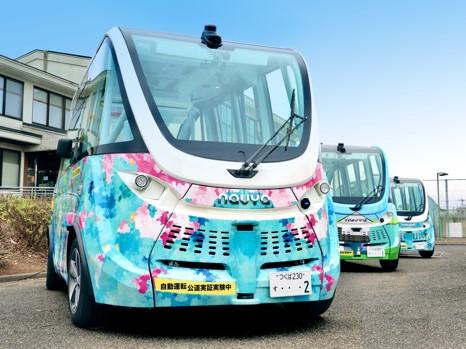
自動運転バスでは、仏Navyaが低速小型のEV自動運転バスを販売しており、日本をはじめ世界各地の実用実証に活用されている。日本では自動運転タクシーより定路線を走行する自動運転バスの実用化が先行する見込みで、2020年11月からは茨城県境町で当社マクニカとBOLDLY協力のもと公道での移動サービスの運用が開始されており、法律上ではレベル2に該当するが、技術的には実質レベル3相当を実現している。
レベル4は移動サービスから一般乗用車は2025年の市場化を目途
レベル4の開発・実用化は、自動運転タクシーで先行する米ウェイモをインターネット大手の百度やスタートアップのWeRide、Pony.ai、AutoXといった中国勢が猛追している状況だ。このほか、配車サービス大手の米Uber(ウーバー)や中国Didi Chuxing(ディディチューシン)、自動車部品大手のAptivなども豊富な実証実績を誇り、自動車メーカーよりも先行する形で自動運転移動サービスの実現を図っている。
日本国内では、日産とDeNAが共同で自由な移動をコンセプトに据えた移動サービス「Easy Ride(イージーライド)」の実証を重ねている。2019年には、自動運転開発スタートアップのティアフォーとJapanTaxi(現・Mobility Technologies)、損害保険ジャパン日本興亜、KDDI、アイサンテクノロジーの5社が自動運転タクシーの事業化に向け協業を始めることを発表しており、2020年11月に東京都内で自動運転タクシーの実証実験を実施した。
物流関連では、道路上を走行する自動運転宅配車両の開発を米Nuroや中国の京東集団などが進めているほか、歩道なども走行可能な小型タイプの開発を米Starship Technologiesや米Amazon.comらが手掛けている。
国が策定した「官民ITS構想・ロードマップ2020」によると、生活道路などの混在空間や、廃線跡やBRT(バス高速輸送システム)専用区間といった限定空間においては、それぞれ1カ所程度でセーフティドライバーによる監視付きのサービスを開始して徐々に対象を拡大し、2023~2025年を目途に遠隔監視のみの自動運転サービスを数カ所で開始する目標を掲げている。
一般乗用車では、レベル3の実現を踏まえた上で、高速道路の入口から出口まで自動運転が可能なレベル4の市場化を2025年目途と見込んでいる。
配送を担う物流サービスも、自動運転移動サービスの技術を応用する形で限定地域において2021年度以降の実現を図っていく構えだ。

自動運転システムの市場化・サービス実現のシナリオ(出典:IT総合戦略本部「官民 ITS 構想・ロードマップ 2020」)
自動運転の業界動向
従来の自動車業界は、自動車メーカーを筆頭に部品メーカーが連なる垂直統合型の産業構造を形成していたが、自動運転業界ではその構造に大きな変化が見られる。
グーグル系のウェイモを筆頭に、アマゾンや米マイクロソフト、米アップル、中国の百度やアリババといったIT・コンピュータ開発系企業がメインプレイヤーとして台頭し、移動サービスや配送サービスへの自動運転技術の導入やクラウド技術などの面で主導権を握っている。
また、米インテルや米エヌビディアといった半導体メーカーも存在感を高めている。インテルはADAS・自動運転開発を手掛けるイスラエルのMobileye(モービルアイ)を2017年に推定153億ドル(約1兆7500億円)、2020年にはMaaSプラットフォーマーの同じくイスラエルのMoovit(モービット)を約9億ドル(約960億円)でそれぞれ買収し、自動運転移動サービスの世界展開を視野に入れた動きを見せている。
エヌビディアも2020年に英半導体設計大手Arm(アーム)を400億ドル(約4兆2000億円)で買収することに合意したと発表した。自動運転開発に関するさまざまなコンテンツや製品を展開しており、自動運転分野における存在感を顕著に高めている印象だ。
スタートアップやベンチャー企業も台頭
スタートアップの台頭も著しい。WeRideら自動運転システム開発を手掛ける企業をはじめ、LiDAR開発やAIによる認識技術など、要素技術の開発に特化した企業も続々と誕生している。
専門性の高い先端技術が結集した自動運転分野では、多分野の企業がパートナーシップを結んで自動運転車を構築する傾向が強く、垂直統合型から水平分業型の構造への変化が進行している印象だ。
その一方で、自動車メーカーらによるスタートアップの買収や出資も相次いでおり、新たに登場したプレイヤーを傘下に収めることで再び垂直統合化するような動きも活発だ。
日本国内でも自動運転OS「Autoware」の開発を手掛けるティアフォーやAI開発を手掛けるPreferred Networks(プリファード・ネットワークス)などのスタートアップ・ベンチャーが活躍の場を広げている。
CASEとMaaS
現在、自動車業界で最も熱いキーワードが「CASE(ケース)」と「MaaS(マース)」だ。CASEはConnected(コネクテッド)、Autonomous(自動運転)、Shared & Services(シェアリングとサービス)、Electric(電動化)の頭文字をとった造語で、業界の開発指針となっている。
コネクテッドは通信機能を備えた自動車を指し、一般の自家用車においてもスマートフォンを介した操作やテレマティクス保険、エンターテインメント機能の充実などを可能にする。
シェアリング・サービスは、カーシェアやライドシェアといった自動車を活用したシェアサービスを指し、今後、自動車は「所有」するものから「共有」「利用」するものへと変化していくことを意味する。
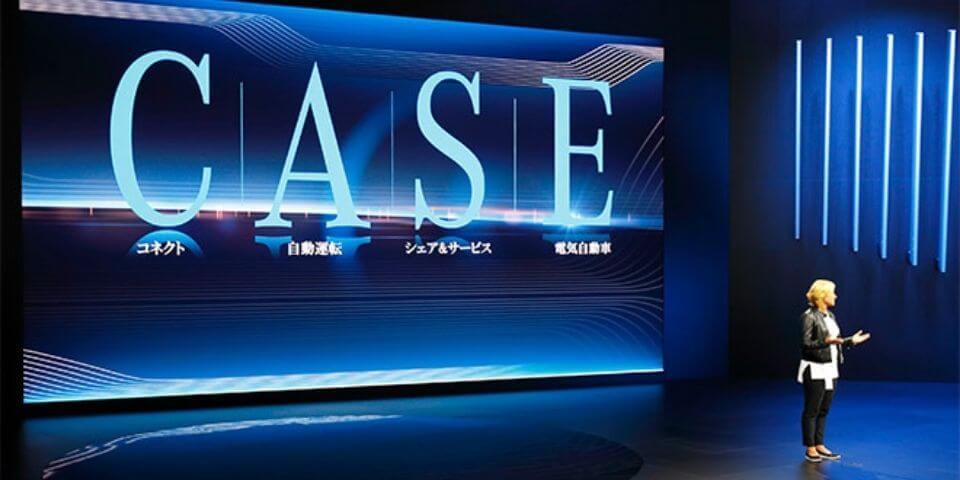
ダイムラーがモーターショーで発表した「CASE」(出典:メルセデスベンツ)
この自動車を利用する観点に関連するのがMaaSだ。移動のサービス化を意味し、鉄道やタクシー、バスをはじめ、今後普及が見込まれる一人乗りの超小型モビリティやキックボードなどの各移動手段がシームレスに繋がり、利用するための予約や決済のワンストップ化をはじめ、乗り継ぎなどの利便性を高めていく取り組みだ。近い将来、自動運転技術を活用した新たな移動手段が導入される可能性も高い。
自動車業界や交通業界の近未来を示すキーワードとして自動運転とともに頻出することが予想されるため、しっかりと頭に入れておこう。
最後に
現在、従来の自動車が自動運転へと移り変わっていく過渡期を迎えつつある。まだ実感は少ないかもしれないが、法律の改正などはその序章で、次第に目に映る範囲に自動運転車が登場する機会が増えてくることは間違いない。
自動運転やMaaSなどによって交通環境が激変する2020年代。既成概念に捉われていると新しい時代の波に乗り遅れることになりかねない。最新の情報をチェックし、自動運転車に負けぬよう自らの知識もしっかりとアップデートしていこう。
お問い合わせ
当社マクニカでは、自動運転に関する様々な製品やサービスを提供しています。自動運転に関するご質問やご要求などございましたら、以下よりお気軽にお問い合わせ下さい。


